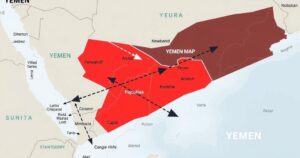Intensified Seismic Activity in Santorini Raises Concerns over Earthquakes

Seismic activity near Santorini has intensified, with over 7,700 earthquakes recorded since January 26, including significant tremors on February 5 and 9. Local officials and scientists are concerned about the potential for larger seismic events, advising residents to remain prepared. Neighboring regions, including Israel, have also expressed concerns about possible tsunami threats, prompting emergency assessments.
Seismic activity around Santorini, Greece, significantly intensified starting February 9, marked by a 5.0 magnitude earthquake occurring 15 kilometers southwest of Arkessini, Amorgos. This event was noted as the strongest tremor since a 5.2 magnitude quake observed earlier on February 5, raising alarms among the local community and scientists regarding the potential for a more substantial earthquake in the region.
Director of the Geodynamic Institute, Vasilis Karastathis, remarked on the recent seismic developments, expressing cautious optimism. He stated, “Since the day before yesterday, a better rhythm has started, a slower rhythm in the earthquakes. This has been maintained.” He clarified, however, that the likelihood of experiencing a more significant quake remains a concern.
The ongoing seismic activity has stirred considerable anxiety among the local populace. Residents in Santorini and its neighboring islands have taken precautions, such as keeping emergency bags in their cars, as reported by SKAI, while many tourists and locals have evacuated in light of the tremors.
Panagiotis Karydis, a professor specializing in anti-seismic constructions, emphasized the significance of the earthquake’s epicenter in assessing potential damage. He stated, “An earthquake from the northeastern side of Santorini, at 6 Richter, in my opinion, will create much smaller problems than one at 4.5-5 Richter from the area of the Caldera.” This underscores the importance of geological conditions in determining impact.
Experts are closely monitoring the seismic situation, with new seismographs being deployed to enhance understanding of the activity. In conjunction, oceanographic studies are proposed to investigate the underlying causes for the persistent tremors affecting the island.
The sequence of seismic swarms began on January 26, and over 7,700 earthquakes have been detected in the Santorini-Amorgos zone, with nearly 6,000 registered in its maritime areas, according to Kathimerini. Seismologist Gerasimos Papadopoulos assessed the series, saying, “We have reached the critical point. We have the first case, if the 5.2 Richter was the main one.”
Concerns have spread beyond Greece to neighboring regions, as reports of these seismic activities have alarmed officials in Israel regarding the risk of a tsunami. This led the Israeli National Security Council to convene an emergency meeting to evaluate the potential threat alongside relevant government agencies.
Dr. Efraim Laor noted that while the risks remain low, a tsunami could occur if a significant earthquake were to happen. He said, “In any case, if an earthquake of more than 6.5 degrees occurs on the island, then there will definitely be a tsunami, but it is not at all certain that it will reach Israel.”
The geological structure between Santorini and Amorgos is characterized by significant activity. According to Terra, this region is home to substantial faults and is actively monitored by seismologists, indicating ongoing tectonic movements. Historical context adds weight to current fears; a 1956 earthquake, measuring 7.7 in magnitude, resulted in considerable devastation, including a tsunami that reached almost 30 meters in height.
In summary, the ongoing seismic activity around Santorini has raised significant concerns among residents and experts alike, underscoring the need for vigilant monitoring. With thousands of quakes recorded since late January and potential tsunami threats observed in nearby regions, the situation remains precarious. Caution from authorities and heightened preparedness among the local population are imperative as experts continue to analyze the seismic developments.
Original Source: www.jpost.com








